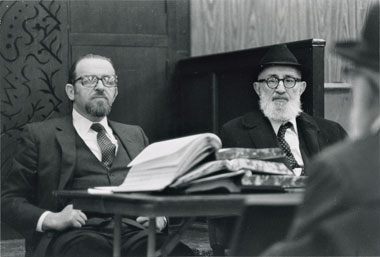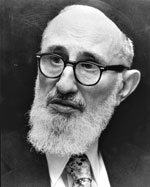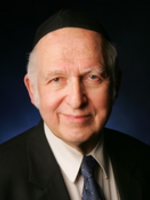
-
In 1886, the seeds for the survival of the Jewish heritage on American soil were planted by a group of impoverished immigrants when they joined to form Yeshiva Eitz Chaim [Tree of Life] on New York’s Lower East Side.
Housed in an tenement, founded in a quest for spiritual enrichment, the yeshiva was an experiment, a tentative answer to a question of the day: how to reconcile the study of Torah and observance of mitzvot with the pursuit of a general education that was essential to advancement in American society?
The pioneers and trailblazers in the founding of Yeshiva Eitz Chaim—an extraordinary educational venture—were a remarkable group of immigrants. As Rabbis, teachers, tailors, peddlers, clothes dealers, publishers, they were deeply concerned about the Jewish education and identity of their children’s generation. They became the backbone of the young school, enrolled their children in the new school and contributed to its leadership.
These immigrants forged a formula for survival in an unfamiliar culture—a distinctive philosophy of synthesis that laid the groundwork for the Western Hemisphere’s major center of Torah learning and leadership.
Through the application of and reapplication of this formula, by holding fast to the ways of Torah while exploring the paths of modern society, the emerging American Jewish community was able to respond to the questions and conflicts of each new generation.
While Yeshiva Eitz Chaim was a crucial and important experiment in Jewish education, critical needs still existed—the need for advanced Torah studies and service; for educated laymen; and for qualified, trained rabbis to lead the American community. To address these needs, Rabbi Isaac Elchanan Theological Seminary (RIETS) was established in March 1896. "Several lads who wanted to improve themselves in the study of Torah" were enrolled. RIETS would be the first Orthodox rabbinical seminary in the United States.
The seminary was named for Rabbi Isaac Elchanan Spektor (1817–1896) noted rabbi of Kovno, Lithuania, and one of the outstanding rabbinic scholars and poskim [decisors] of the 19th century. Pronounced an iluy [prodigy] at the age of eight, he became an extraordinary spiritual leader, earning the love of and respect of colleagues and all Jews throughout the world. Rabbi Spektor’s greatness in learning was matched by personal piety and a deep sense of humility.
RIETS was named after Rabbi Spektor as the ultimate tribute to his scholarship and noble deeds, a legacy of learning. Yet the individuals who founded RIETS and Eitz Chaim were also establishing a legacy for themselves and institutions that would help to transform Jewish education and Jewish life.
Today, the Rabbi Isaac Elchanan Theological Seminary continues to carry forward the legacy of its founders. Standing tall as a Tree of Life within the Jewish community, RIETS is flourishing and nurturing scholars who will contribute creatively to the strengthening and preservation of the Jewish people and heritage.
Historic Roshei Yeshiva
-
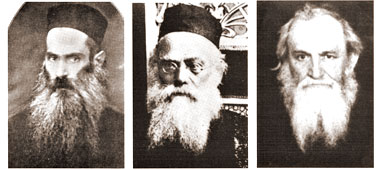
Since its inception, RIETS has pursued the high standards of scholarship exemplified by Rabbi Isaac Elchanan Spektor. At no other school have so many great roshei yeshiva shared their wisdom.
Among them were Rabbi Solomon Polachek (top left), a preeminent prodigy of his time, known as the Meitscheter Ilui, who taught here 1921–28; Rabbi Shimon Shkop (top center), the famous rosh yeshiva of Grodno, who taught here 1928–29; and Rabbi Moshe Soloveitchik (top right) who brought the heralded Brisker approach developed by his sainted father Rabbi Chaim of Brisk (Brest-Litovsk) to the United States.
Rabbi Dovid Lifshitz (Suvalker Rav), a warmly revered teacher and world-renowned authority on Halacha, served as a rosh yeshiva at RIETS—the I. Meier and Henrietta Segals Professor of Talmud—for nearly a half century.
Learn about these and other eminent RIETS Torah scholars zt''l from the earliest days to recent decades.
More about Rabbi Elchanan Spektor:
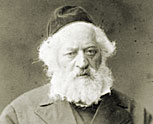
Rabbi Isaac Elchanan Spektor (1817–96) was a revered sage and spokesman for world Jewry.
Born in Rosh, Lithuania, and pronounced an ilui at the age of eight, he was named spiritual leader of Sabelin at 20. With a growing reputation for remarkable erudition, he went on to become rabbi of Baresa, Nishvez, and, in 1851, the larger city of Novohrodak.
In 1864, he was named rabbi of Kovno, Russia, a major Jewish community. Jews throughout the entire world turned to him for halakhic guidance. The Kovner Rav’s writings were highly influential—on such issues as the observance of shmetta (sabbatical year) laws in the fledgling settlements of what was then Palestine and resolution of the tragic plight of agunot.
After his death in 1896, RIETS was named in his memory.
-
Harav Hagaon R. Joseph B. Soloveitchik zt"l
Rabbi Joseph B. Soloveitchik zt"l RIETS' standing as one of the world's great yeshivot derives in large part from its unique faculty.
Among the most illustrious Gedolei Torah was Rabbi Joseph Baer Soloveitchik zt''l, a towering scholar, philospher and teacher who had a profound impact on Jewish thought in our age. He was a leading authority and exponent of Halacha and the mentor of two generations of spiritual leaders. Senior rosh yeshiva at RIETS—the Lieb Merkin Distinguished Professor of Talmud and Jewish Philosophy—for over 40 years, he was also a Bernard Revel Graduate School of Jewish Studies faculty member.
Rabbi Soloveitchik was familiarly known as ''the Rav,'' an appellation of mentor and guide instantly recognized in every sphere of Jewish life and intellectual endeavor. Shunning the spotlight and generally not publishing his works, he had the legendary power to deliver unparalleled discourses spanning the Talmud, Jewish law, philosophy and contemporary issues.
Rabbi Joseph B. Soloveitchik zt"l Rabbi Soloveitchik was born in Poland in 1903, scion of an enduring rabbinic dynasty. His grandfather, Rabbi Chaim of Brisk, developed an innovative system of Talmudic study—the acclaimed ''Brisker method''—which stressed incisive analysis and precise classification. Trained by his father, Rabbi Moses Soloveitchik, in this approach, the Rav earned a PhD in philosophy at the University of Berlin in 1931 and came to the United States the following year.
In 1941, Rabbi Joseph Soloveitchik was appointed rosh yeshiva at RIETS, succeeding his father, who, as rosh yeshiva since 1929, had transplanted the Brisk legacy on American soil. The Rav enriched this system of learning through a creative fusion of Jewish and Western scholarship.
In 1983, through an endowment by Maurice H. Saval, RIETS' Semikhah Program was renamed the Rabbi Joseph B. Soloveitchik Center of Rabbinic Studies. The Rav's ordination of some 2,000 rabbis over nearly half a century is unmatched and extends his influence beyond the borders of time and place.
Selected Teachings by the Rav
On the Love of Torah (YUTorah.org)
The Nine Aspects of the Haggada (YUTorah.org)
Rav Soloveitchik on the Pesach Haggada (YUTorah.org)Remembering the Rav
Legacy of Rav Soloveitchik, by Rabbi Hershel Schachter (YUTorah.org)
Memories of the Rav, by Rabbi Hershel Reichman (YUTorah.org) -
Co- Founder of Rabbi Isaac Elchanan Theological Seminary
RIETS was founded in 1897 by three lovers of Torah – Rabbi Moses Mayer Matlin, Rabbi Yehuda David Bernstein, and David Abramowitz. Born in Soly Russia, David Abramowitz served as executive director, manager, comptroller, bookkeeper, registrar, dean of men, fundraiser, as well as many other capacities. Until his death in 1916, he served as the Superintendent of RIETS.
In 1927, during the construction of the present building of Yeshiva University on Amsterdam Avenue, a Megillah (describing the history and purpose of the school) was deposited under the cornerstone. This scroll memorialized the pioneers of the school: Rabbi Moses Matlin, Rabbi Yehuda David Bernstein and David Abramowitz. With great vision and determination and without financial resources, a founding board, a congregational union or experienced leadership, they created the first Orthodox Rabbinical Seminary in America. Their purpose and goal was to promote the study of the Talmud and to assist, educate and prepare students of the Hebrew faith for the Hebrew Orthodox Ministry (Rabbinate).
The inscription on David Abramowitz’s Matzevah sums up this pious man: “Here is buried, a dear soul, a famous man from a respected family; his work was in charitable acts. For days and years he went in the righteous path. May his soul be tied to the lives of the living.”
-
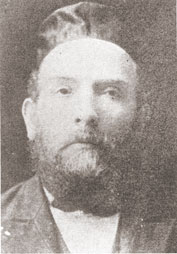
Rabbi Alperstein was born in Kobrin, Horodna. He obtained an extraordinary knowledge of the Talmud Bavli and the Talmud Yerushalmi. He served as a rabbi in Novogorod, Vilna, for several years and, in 1881, came to the United States and became rabbi of Khal Adath Jeshurun in New York.
In 1884, he went to Chicago to take another rabbinic pulpit and, in 1889, to St. Paul. He returned to New York in 1901 and served as spiritual leader of Congregation Mishkon Yisroel. He was one of the founders of the Agudath HaRabbonim of America.
Rabbi Alperstein has the distinction of being the first rosh yeshiva of Rabbi Isaac Elchanan Theological Seminary. Upon his death, his wife founded in his memory the Beth Abraham Home for the incurably sick in the Bronx which, today, is the Beth Abraham
-
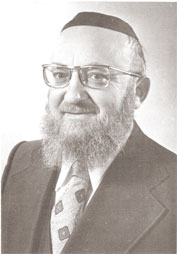
Rabbi Alpert, one of the most prominent and celebrated students of Rabbi Moshe Feinstein zt”l, was counted among the most distinguished rabbonim in this country. He was the son of Rabbi Shabbtai Alpert zt”l, the rabbi of Plonk in Lithuania, who was the nephew of the Chofetz Chaim zt”l.
Upon his arrival in America, Rabbi Alpert immediately entered Yeshivat Tiferet Yerushalayim. He had the privilege of developing a close relationship with Rabbi Moshe Feinstein. After receiving semikhah from Rabbi Feinstein, Rabbi Alpert accepted a position as rebbe at Yeshivat Tiferet Yerushalayim and then, in 1967, was appointed a rosh yeshiva at the Rabbi Isaac Elchanan Theological Seminary. He was the first rosh kollel of the Kollel L’Horaah Yadin-Yadin established by RIETS to prepare poskim.
In his later years, Rabbi Alpert also served as the spiritual leader of Agudath Yisroel of Far Rockaway. He was previously rabbi of Kehillat Chevrat Bochurim on the East Side for many years.
Rabbi Alpert was a renowned talmudic scholar and left behind many distinct novellae in Torah and halakhah. He published the Beit Habechirah of the Meiri on Bava Metzia, along with his own scholarly notes. In addition, he compiled a commentary of the Raavad on Bava Metzia. Other published writings of his include Limmudei Nissan on the Torah, as well as on Tractate Beitzah.
Rabbi Alpert was also known as an extraordinary darshan—a preacher who was able to excite his audience. Only a short while before his own passing, he delivered an emotional eulogy at the funeral of his rebbe, Rabbi Moshe Feinstein zt”l, and his audience was able to sense that this premier talmid would soon, tragically, join his great teacher. Rabbi Alpert passed away at the age of 58 and was laid to rest on Har Hazaitim in Jerusalem.
-
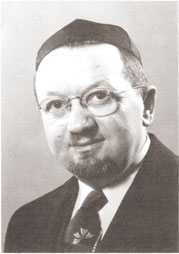
Rabbi Arnest was born in Aniksht near Telshe, Lithuania. He was one of the youngest students of Rabbi Boruch Ber Leibowitz zt”l (still in Krementzog during World War I). Afterwards, he studied at the yeshiva in Telshe together with Rabbi Eliyahu Meir Bloch zt”l.
On the recommendation of Rabbi Avraham Shapiro zt”l, rabbi of Kovno, he was brought by Rabbi Bernard Revel zt”l to give shiurim at Rabbi Isaac Elchanan Theological Seminary in 1938. Rabbi Arnest served as a rosh yeshiva there and taught hundreds of students until his passing.
A gaon in Torah, Rabbi Arnest authored two seforim, Lev Yosef and Torat Eretz Zvi. He also authored a commentary called Chiddushim ViHearot At Teshuvot HaRambam, which was published in the Shulzinger edition of the Rambam. In addition, he published widely in various Torah journals
-
Rabbi Binyomin Aronowitz was born in Varzhan, Lithuania. He received his rabbinical training in the yeshivot of Teishe and Volozhin. Rabbi Aronowitz came to America in 1906 and took a pulpit in Lowell, Massachusetts. In 1910, he was appointed a rosh yeshiva at Rabbi Isaac Elchanan Theological Seminary, where he taught until his death.
He published his writings in various Torah journals, served as president of the Agudath Harabbonim of America, and was an active member of Va ad Harabbonim and Agudath Yisroel.
-
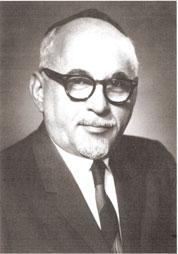
Rabbi Belkin was born in Soslovitz, Poland. He studied at the yeshiva in Mir and in Radin. He received semikhah from the Chofetz Chaim zt”l at age 17. In 1929, he came to America and while serving as rosh yeshiva in New Haven, Connnecticut (which eventually became Ner Yisrael in Baltimore), he studied ancient Semitic languages at Brown University and received a doctorate for his work on Philo.
He was appointed rosh yeshiva at Rabbi Isaac Elchanan Theological Seminary in 1935 when he was only 24, probably the youngest rosh yeshiva in the history of RIETS, and was appointed its president in 1943. He taught Torah and led the Yeshiva through a period of enormous growth until his passing.
In addition to his scholarly work on Philo and Philonic literature, Rabbi Belkin left many shiurim in their original form and published articles in various Torah journals.
-
Rabbi Bernstein was born in Alekson, near Kovno. He studied in Slobodka and was known there as the illui from Sapizishok. In addition to his greatness in Torah, he was an engineer who excelled in mathematics. When he came to the United States in 1894, he refused to use his ordination as the source of his livelihood.
Rabbi Bernstein was among the founders of Rabbi Isaac Elchanan Theological Seminary. He published his chiddushei Torah in many Torah journals.
-
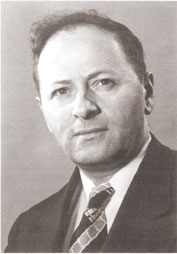
Rabbi Borenstein was born in Lithuania and studied in the Mir and Lomza yeshivot, and with Rabbi Yitzchok Zev Soloveitchik zt”l, rabbi of Brisk.
After many wanderings during World War II, he escaped by way of Russia-Japan Shanghai to Canada, where he established a yeshiva. Afterwards, he came to America and taught Torah at Tiferet Yerushalayim until 1943.
Rabbi Borenstein was then appointed a rosh yeshiva at Rabbi Isaac Elchanan Theological Seminary. He was an outstanding scholar, an extraordinary gaon, and an extremely humble and modest person. Some of his writings are published in various Torah journals, while many others remain in their original form.
-
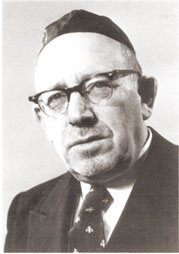
Rabbi Burack was born in Popilan, Kovno, and studied in the yeshivot of Telshe and Slobodka, where he received semikhah. When he came to the United States in 1914, he became rabbi of the Beit Hamedrish Etz Chaim Anshei Volozhin in New York City and then at Congregation Tehillim Ohel Moshe in Brooklyn, where he served for more than four decades.
In 1919, he was appointed a rosh yeshiva at Rabbi Isaac Elchanan Theological Seminary, where he taught thousands of students until his death.
Rabbi Burack published his writings in many Torah journals. He also authored the sefer Pirchei Aharon, a two-volume work on halakhah and aggadah. He was a leading figure in the Agudath HaRabbonim and Mizrachi, and particularly distinguished for his flowery and fiery oratory which greatly inspired his audiences.
-
As the Max and Marian Grill Dean of the Rabbi Isaac Elchanan Theological Seminary (RIETS) for more than 35 years, Rabbi Charlop’s impact on YU was deep and profound. Under his stewardship, RIETS experienced enormous growth, graduating thousands of rabbis, educators and Jewish scholars. As Dean of RIETS, Rabbi Charlop left a deep and enduring imprint on YU, becoming a role model for what it means to be a rabbi.
For 54 years, Rav Charlop served as the rov of the Young Israel of Mosholu Parkway in the Bronx, where he spent most of his life.
Dedicated to God and to the Jewish people, a scholar of Torah, rabbinic law, and American history, Rabbi Charlop was a role model for rabbinical students, devoting his life to educating future generations of rabbis. His goal was always to create rabbis who could relate to the broadest range of Jews throughout the country and world. With a passion for Judaism and for life, he embodied the ideals of Yeshiva University.
Rabbi Charlop authored numerous scholarly essays, including “The Making of Orthodox Rabbis” in Encyclopedia Judaica and “G-d in History and Halakha from the Perspective of American History.” He also was the editor of novella on Torah and Talmud by his late father and the author of Shefa Yamim, a 470-page collection of his original Torah thoughts.
Rabbi Zevulun Charlop served as president of the American Committee for the United Charities in Israel, General Israel Orphans Home for Girls in Jerusalem, and the National Council of Young Israel rabbis. -
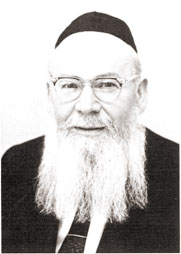
Rabbi Cyperstein studied at the yeshiva in Slobodka, where he was greatly inspired by the Sabah of Slobodka. He was among the students there who established the yeshiva in Hebron. After several years in Israel, he returned to Poland to study at the Mir yeshiva. He married the granddaughter of Rabbi Yitzchok Yaakov Reines zt”l and upon Rabbi Reines' death, succeeded him as the Lida Rav. He escaped to Shanghai during World War II and learned there bechavrusa with Rabbi Chaim Shmulevitz zt”l.
After the war, Rabbi Cyperstein came to New York and founded the Kollel Sridei Hacherev for outstanding refugee scholars at Rabbi Isaac Elchanan Theological Seminary. He was a rosh yeshiva there for 25 years, with a two-year hiatus from 1957-59 when he served as chief rabbi of Argentina.
At the end of his life, he moved to Israel where he died. He taught many students and published many Torah articles.
-
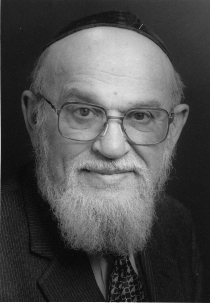
Born in Germany, Rabbi Drillman began studying with Rabbi Elchanan Wasserman Hy”d in Baronovich at the age of twelve and then learned with Rabbi Baruch Ber Leibovitz in Kaminetz before fleeing to Siberia with his family during WWII. Rabbi Drillman came to America in 1946, where entered RIETS and became a talmid of Rabbi Yoseph Dov Soloveitchik.
Rabbi Drillman was a rebbe at Yeshiva University’s High School for Boys – Brooklyn and became a Rosh Yeshiva at RIETS in 1982 when the high school closed. In addition to his shiur, Rabbi Drillman coordinated the Halakha L’Maaseh program at the yeshiva, thereby interacting with every semikha student in the yeshiva. Rabbi Drillman also gave a popular weekly shiur on Parshat HaShavua, and many of these shiurim were compiled by talmidim into a volume entitled “The Wisdom of Solomon.” Rabbi Drillman was a powerful orator, and he would excite audiences in Yeshiva with stories about life in Europe, his experiences during the Holocaust, and his relationship with Rabbi Wasserman.
In addition to the many hours that Rabbi Drillman spent delivering shiurim and interacting with his talmidim at the yeshiva, he also served as rabbi of the Glenwood Jewish Center for almost forty years, helping to turn Flatbush into the community it is today.
-
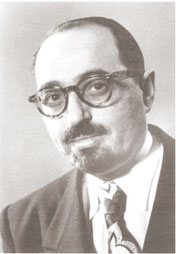
Rabbi Fishman was born in Boroza, Poland. He studied at the yeshiva in Baronowitz under the guidance of Rabbi Elchanan Wasserman zt”l, with whom he learned bechavrusa for one full year. From Baronowitz, he went to the yeshiva in Mir and then Brisk, where he studied under Rabbi Yitzchok Zev Soloveitchik zt”l for one year.
During World War II, he escaped with the Mir yeshiva to Shanghai.
When he reached America, he taught in Yeshivas Rabbi Yisroel Salanter and held several rabbinical posts. In 1953, he was appointed a rosh yeshiva at Rabbi Isaac Elchanan Theological Seminary where he taught until his death, revered by his students.
-
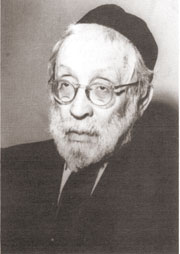
Rabbi Gerstenfeld was born in Rava-Russkaya in Galicia. He studied in the yeshiva at Klausenberg where he received semikhah from Rabbi Moshe Shmuel Glazner zt”l. He served as rabbi in England for 12 years.
After coming to the United States in 1916, Rabbi Gerstenfeld served as rabbi in Beit Haknesset Shomer Shabbat Nusach Ashkenaz in Brooklyn. In 1917, he was appointed a rosh yeshiva at Rabbi Isaac Elchanan Theological Seminary, where he taught for 40 years.
Rabbi Gerstenfeld, rare among his European peers of that time, also wrote in the English language with ease and style and published articles in various Torah journals as well as for the broader community.
-
Rabbi Ozer Glickman was a RIETS Rosh Yeshiva and teacher in Sy Syms School of Business and Isaac Breuer College. He previous studied philosophy at Columbia University, where he received his BA. He also studied philosophy and religion on the graduate level at the University of Toronto, and he earned an MBA in finance from New York University’s Stern School of Business in 1980. He studied at Yeshivat Mercaz HaRav Kook and received rabbinic ordination from leading rabbinic figures in Israel and the Diaspora.
Since 2000, Rabbi Glickman had been affiliated with Yeshiva University as a rosh yeshiva and teacher of Talmud and halakhah to undergraduate and semikhah students. He taught courses in Business and Jewish Law in Sy Syms School of Business and Isaac Breuer College (IBC).
Rabbi Glickman formerly served as senior vice president of strategic risk management and global head of corporate treasury for the Canadian Imperial Bank of Commerce. Additionally, he taught at the Benjamin N. Cardozo School of Law, where he was the senior resident rabbinic scholar, adjunct professor of law at the Center for the Study of Jewish Law and Contemporary Civilization, and affiliated with its Program in Jewish Law and Interdisciplinary Studies. -
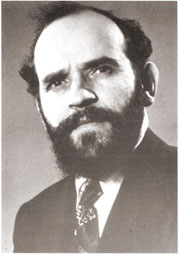
Rabbi Gorelik was born in Telechin near Pinsk and then settled in Rutka. He studied at yeshivot in Lomza and Radin and, afterwards, traveled to study with Rabbi Yitzchok Zev Soloveitchik zt”l, rabbi of Brisk. He remained in Brisk for five years.
During World War II, he moved with his family to Vilna. He escaped from there and ultimately reached America by way of Japan just before America entered the war. Upon coming to America, he served as ram at Yeshivat Tiferet Yerushalayim and involved himself in relief efforts.
In 1943, Rabbi Gorelik was appointed a rosh yeshiva at Rabbi Isaac Elchanan Theological Seminary where he taught Torah to thousands of students until his death. He served as rabbi in the Bronx, established Yeshivas Zichron Moshe and the Beis Yaakov-Beis Miriam in the Bronx, and Yeshiva Gedolah L’Mitzuyanim of South Fallsburg, New York.
He left behind many writings in their original form, as well as a family of Torah scholars and roshei yeshiva.
-
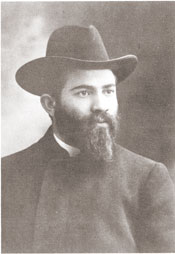
Rabbi Heller was born in Bialystok, Poland. A young prodigy, he became known throughout Russia and Poland as the Illui of Warsaw. He advanced so rapidly that, after age 10, he no longer studied under a teacher or rosh yeshiva. With his keen mind and extraordinary memory he acquired a rare, comprehensive knowledge of the entire Torah.
In 1912, he was appointed as rabbi and Av Beit Din in Lomza. In 1922, he moved to Berlin and founded Beit Midrash HaElyon, which attracted many rabbonim and gaonim, but the Nazi persecutions compelled him to come to America.
He published the classic edition of Sefer HaMitzvot L'Rambam and a two-volume work on Shulchan Aruch, Choshen Mishpat entitled LeChikrei Halachot. He also published writings in the various Torah journals. Rabbi Heller authored the sefer Nusach HaShomroni, as well as other works. He gave shiurim at Rabbi Isaac Elchanan Theological Seminary for a number of years covering all facets of Torah knowledge
-
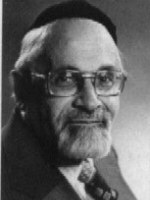
Rabbi Katz was born in Grodno, Poland to a renowned family of geonim. His father and first teacher, Rabbi Reuven Katz, authored Degel Reuven. Rabbi Katz and his family emigrated from Poland to the United States when he was twelve and then moved to Israel two years later, when his father was appointed Chief Rabbi of Petach Tikva. As a young boy, Rabbi Katz studied with Rabbi Shimon Shkop, zt”l and later in the Chevron Yeshiva with Rabbi Isser Zalman Meltzer, among others. He received his semicha from Chief Rabbi Yitzchak Isaac Herzog, Rabbi Meltzer, and the chief rabbi of Tel Aviv, Rabbi Avigdor Amiel.
In 1940, Rabbi Katz accepted a scholarship offer from then University President Rabbi Bernard Revel to attend Yeshiva College. There, Rabbi Katz became a talmid of Rabbi Moshe Soloveitchik. Upon graduation, in 1945, Rabbi Katz was appointed rosh yeshiva at RIETS and an instructor of Bible at Yeshiva College. He continued to teach at RIETS for almost sixty years, including more than thirty years as rebbe of the Hullin shiur. His doctoral thesis, written in 1963 and published in 1968, dealt with the commentary of Rabbeinu Meyuchas ben Eliyahu to Sefer Devarim. Rabbi Katz also served as rabbi of Congregation Petach Tikvah in the Bronx for 20 years.He subsequently published Rabbeinu Meyuchas ben Eliyahu to Sefer Vayikra.
Rabbi Katz’s humility, derech eretz, courtesy, and respect were legendary, as was his love for Torah, his talmidim, and his family. Rabbi Katz maintained a close relationship with many talmidim after they left his shiur, and he looked forward to keeping up with them, their wives, and their children.
-
Rabbi Kotler was born in Kovno, Lithuania. He learned there first under Rabbi Eliezer Gordon zt”l from Telshe and then in the yeshiva of Rabbi Yaakov Charif zt”l, who became his foremost teacher. He received semikhah from many gaonim, among them Rabbi Yitzchok Elchanan zt”l.
At age 20, having served as ram in Lomza, he became the first rosh yeshiva of the famed Yeshivat Knesset Yisroel when it was founded in Slobodka. From there, he went on to become Av Beit Din in the city of Uzhvent, Kovno. When Rabbi Jacob Joseph zt”l, the chief rabbi of New York, fell ill at the end of his life, he invited Rabbi Kotler to serve as his associate. Upon coming to New York, he was appointed rabbi of Congregation Tifferes Yisroel, where he remained for three years.
Rabbi Isaac Elchanan Theological Seminary was founded within a few months of Rabbi Kotler’s arrival and he was shortly appointed as a rosh yeshiva. Several years later, he returned to Europe to be a rabbi in the cities of Kurshan and Luknik. He returned to America during World War I and settled for seven years in Detroit. Then he moved to Israel where he passed away. He authored numerous articles, which were published in the various Torah journals of his time, as well as many seforim, including Teshuvot Kerem Shlomo and Beit Shlomo.
-
Rabbi Dr. Norman Lamm—distinguished rabbi, philosopher, teacher and author—was elected president of Yeshiva University in August 1976, succeeding Dr. Samuel Belkin and Dr. Bernard Revel. He was the University's third president and the first native-born American to head the nation's oldest and most comprehensive Jewish institution of higher learning. He served as chancellor of the University and rosh ha-Yeshiva of its affiliated Rabbi Isaac Elchanan Theological Seminary from 2003 until his retirement on June 30, 2013. He died on May 31, 2020 at the age of 92.
Born in Brooklyn, NY, in 1927, Rabbi Dr. Lamm received his elementary and high school education at Yeshiva and Mesivta Torah Vodaath. In 1945, he entered Yeshiva College, where he continued his Jewish learning and undertook a liberal arts program with a major in chemistry. He graduated summa cum laude in 1949 and was class valedictorian.
Upon graduation, Rabbi Dr. Lamm pursued advanced scientific studies at the Polytechnic Institute of Brooklyn while continuing his Judaic studies and rabbinic scholarship. He was ordained as a rabbi by YU's affiliated Rabbi Isaac Elchanan Theological Seminary in 1951 and earned a PhD in Jewish philosophy from the University's Bernard Revel Graduate School in 1966.
During the 17 years preceding his election as president, Rabbi Dr. Lamm served on the Yeshiva University faculty, culminating in his appointment as the Erna and Jakob Michael Professor of Jewish Philosophy in 1966. A pulpit rabbi for 25 years, he served as spiritual leader of the Jewish Center in Manhattan. Prior to that, he served as assistant rabbi of New York City's Congregation Kehilath Jeshurun and then as rabbi of Congregation Kodimoh in Springfield, MA.
Rabbi Dr. Lamm gained wide recognition for his writings and discourses on interpretation of Jewish philosophy and law, especially in relation to problems involving science, law, technology and philosophy in the modern world. He authored over 15 books, including The Religious Thought of Hasidism: Text and Commentary, which won the coveted 1999 Jewish Book Award in Jewish Thought.
Rabbi Dr. Lamm edited or co-edited more than 20 volumes, including The Library of Jewish Law and Ethics. He was the founder and first editor of Tradition and associate editor of Hadarom, a journal of Jewish law; founder of the Torah U-Madda Journal; and founder of the Orthodox Forum.
-
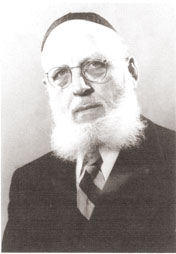
Rabbi Lessin was born in Kapoli, Minsk. He received his rabbinical training in Yeshivat Knesset Yisroel from 1905 until 1912, and was a prominent talmid of the Sabah, the famed Rabbi Finkel of Slobodka. He attended to the personal needs of the Sabah and absorbed his teachings. He received semikhah from Rabbi Moshe Mordechai Epstein zt”l, the noted Slobodka rosh yeshiva, and Rabbi Boruch Dov Leibowitz zt”l, rosh yeshiva of Kaminetz.
He served as a rabbi in Lithuania, specifically in the cities of Gertigoli and Neishtat-Sugind. In 1939, at the outbreak of World War II, he came to America and served for three years as a rabbi in Boston. He founded yeshivot in Chelsea and Dorchester.
In 1942, he was appointed mashgiach ruchani of Rabbi Isaac Elchanan Theological Seminary by its president, Rabbi Samuel Belkin zt”l.
Rabbi Lessin had great impact upon the lives of many students who acquired an appreciation of the fear and service of Heaven from him. He authored three works of mussar: Derech Chaim; Orach Chaim; and Hamaor Shebatorah.
-
Rabbi Levine was born in Ashmana, Vilna. A great Torah scholar and lamdan, he was a student of the Netziv zt”l in the yeshiva of Volozhin.
When he came to America, he served as rabbi in various cities in Connecticut, as well as in Toronto, and Newark.
As a rosh yeshiva at Rabbi Isaac Elchanan Theological Seminary, he influenced many students. Rabbi Levine compiled a sefer entitled Yad Halevi in which he displays his greatness in both halakhah and aggadah. The first essay in the sefer is his siyum on the entire Talmud which he recited at his wedding when he was 20 years old.
-
Born in France in 1933, Rav Aharon Lichtenstein served as the co-Rosh Yeshiva of Yeshivat Har Etzion in Alon Shvut Israel as well as RIETS Rosh Yeshiva and Inaugural Rosh Kollel of the Gruss Institute. The son-in-law of Rav Yosef Dov HaLevi Soloveitchik, Rav Lichtenstein assumed the mantle as his generation's eminent Torah U'Madda personality. He held a doctoral degree in English from Harvard University and served on the faculty of Yeshiva University in New York before making aliyah in 1971. His many students are eminent figures in Jewish education in Israel and abroad. Rav Lichtenstein passed away in 2015.
-
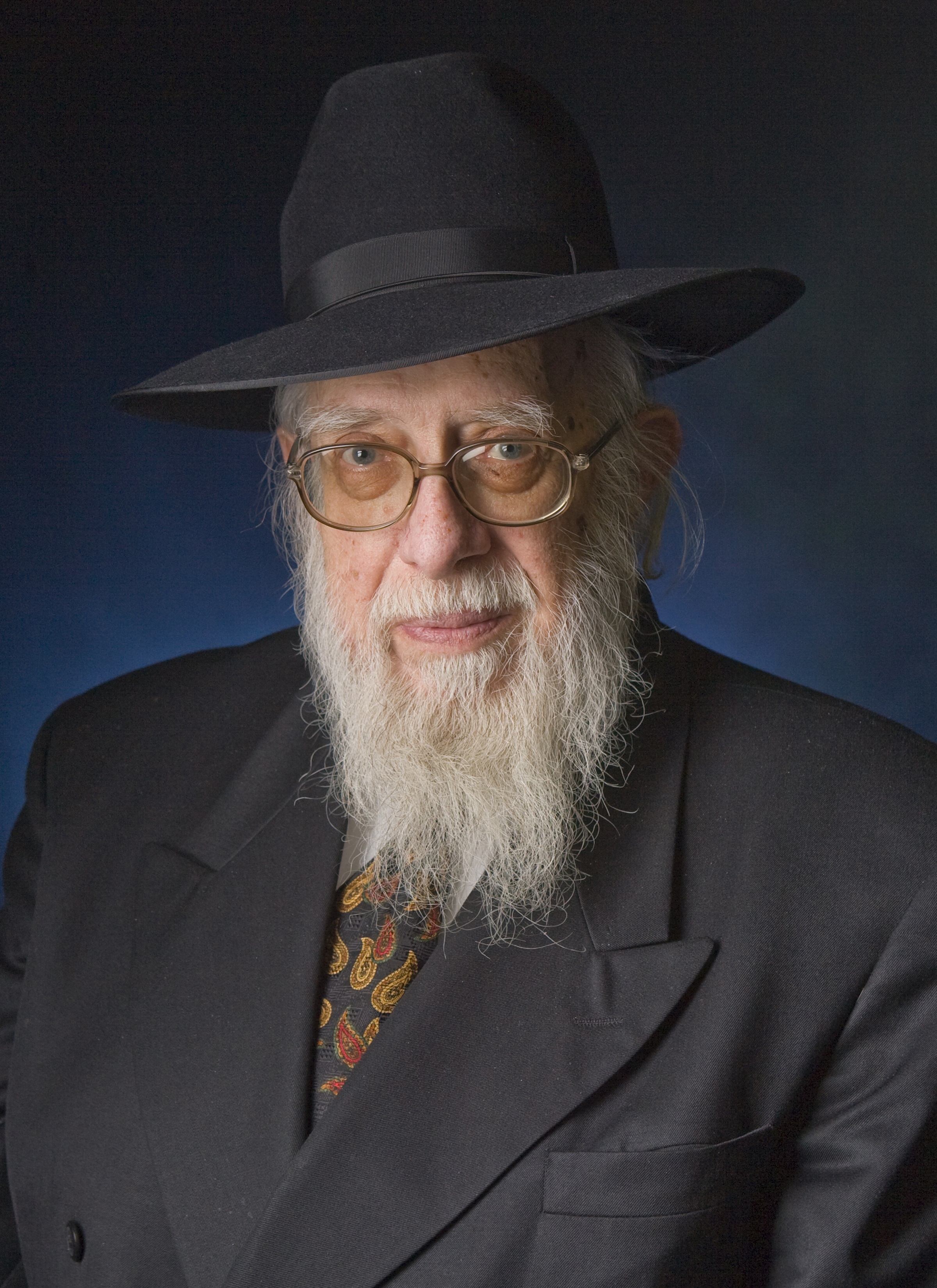
The illustrious career of RIETS Rosh Yeshiva Rabbi Dr. Zevulun (Sidney Z.) Lieberman z"l (YC 51, RIETS 54, FGS 59) came to an end on 2 Teves 5773. Rabbi Lieberman served as the head of both the Syrian Community Bet Din and the Vaad Harabonim of Flatbush and was the revered senior Rabbi (and later Rabbi Emeritus) of Congregation Beth Torah in Brooklyn for over 52 years. An erudite historian, he arrived at Yeshivah of Flatbush in 1954 and served as High School Administrator, Assistant Principal and Acting Principal and then Principal of General Studies until he ended his tenure in 1966. He was an integral contributor to the development of the Joel Braverman High School from its founding days. He continued in the field of Jewish education as Headmaster of the Ramaz School and Principal of Hillel Day School.
Most recently he held the Maxwell R. Maybaum Memorial Chair in Talmud and Sephardic Codes (Halacha) at RIETS for close to three decades where he taught the Sephardic rabbinic students. He was revered by his congregants, students and colleagues alike for his Hessed, his profound knowledge and his sincerity of purpose in all his endeavors. In October 2000 his son Hillel HYD was murdered by a Palestinian mob on his way to Kever Yoseph.
-
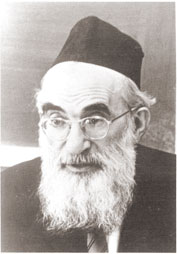
Born in Minsk, Rabbi Lifshitz was a foremost student of Rabbi Shimon Shkop zt”l in Grodna. After leaving Grodna, he continued his learning in Yeshivat Mir, where he became well known as an outstanding scholar. In 1933, he married Tzipporah Chava, the daughter of Rabbi Yosef Yoselowitz, rabbi of Suwalk. Two years after his marriage, Rabbi Yoselowitz passed away and Rabbi Lifshitz succeeded him as rabbi of that city, then one of the most important centers of Jewish life.
He remained there until the Nazis captured Suwalk in 1940. In 1941, he reached America along with his wife and daughter, and was appointed a rosh yeshiva of Beit Midrash LeTorah in Chicago. Rabbi Lifshitz developed a strong connection with his fellow rabbanim, his students and the rest of the Chicago community. His reputation as an outstanding rosh yeshiva spread throughout America and he received offers for several positions. He accepted the invitation of Rabbi Samuel Belkin zt”l and, in 1944, was appointed a rosh yeshiva at the Rabbi Isaac Elchanan Theological Seminary.
There he taught Torah for almost 50 years to thousands of students, many of whom came to be known as “Reb Dovid’s students.” His efforts on behalf of the community were numerous. He served as a member of the presidium of the Agudath HaRabbonim of America and Canada for many years. During the final 17 years of his life, he served as president of Ezras Torah.
His discourses in chochma and mussar were compiled and published by his students and given the title Tehillah LeDovid. His shiurim on the Talmud were also published as Shiurei Rav Dovid Lifshitz.
Hespedim for Rav Dovid Zt'l
- Short Biography of Rav Dovid
- Biography from the Yated Ne’eman
- Biography from Hamodia
- Rabbi Chaim Waxman's Hesped for Rav Dovid
- Hesped for Rav Dovid from the Jewish Observer 1
- Hesped for Rav Dovid from the Jewish Observer 2
- Hebrew Hesped for Rav Dovid
- Hesped for Rav Dovid by Rabbi Dovid Cohen
- Flyer for the 20th Yartzheit at YU and Recording
-
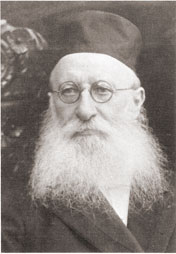
Rabbi Margolies was born in Krozh, Kovno. At age 15, he studied with and attended to his uncle, Rabbi Dovid, Av Beit Din in Maurotsh. He received semikhah from Hagaon Baal Oneg Yom Tov Rabbah of Bialystok under whose tutelage he remained for some time. He served as rabbi in Slobodka for 12 years.
In 1889, he was called upon to serve as chief rabbi in Boston. Afterwards, he became rabbi of Congregation Kehillath Ieshurun in New York City, where he remained for 31 years until his death. He was one of the great rabbinical figures and spiritual leaders in America, and a founder of the Agudath HaRabbonim of America.
Rabbi Margolies, along with Rabbi Hillel Klein zt”l, Rabbi Shmuel Tzvi Wien zt”l, and Rabbi Dov Aryeh Hacohen Levintahl zt”l, constituted the first semikhah board established by the Rabbi Isaac Elchanan Theological Seminary in 1906. Rabbi Margolies, who became known by his acronym RAMAZ, served as president of the Yeshiva for a short time (in 1906), and over the course of many years contributed significantly to the success and growth of the Yeshiva.
-
Rabbi Olishevsky was born in Pruzhan, Poland. He received semikhah from Rabbi Chaim Halevi Brisker zt”l, Rabbi Zalman Sander zt”l, and Rabbi Eliyahu Feinstein zt”l. He taught at Rabbi Isaac Elchanan Theological Seminary for many years and enjoyed much influence among its students. Rabbi Olishevsky authored the two-volume work, Divrei Shmuel.
-
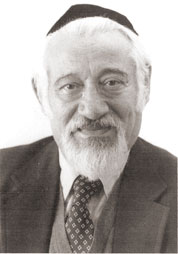
Rabbi Paretzky was born in Brozhnik, Lithuania. At age ten, he studied at the yeshiva in Bialystok and continued his learning in Kobrin. He developed a close relationship with Rabbi Shlomo Mattis zt”l, who was a rebbe in the yeshiva there.
Although he was still young when he left to learn at the Yeshiva in Radin, Rabbi Paretzky was already known as an extraordinary scholar, as well as an innovator, and had developed a close relationship with the rosh yeshiva, Rabbi Mendel Zaks zt”l, the son-in-law of the Chofetz Chaim zt”l.
Before coming to America in 1939, Rabbi Paretzky spent a short time at Yeshivat Beit Yosef, Navardok, Bialystok. There, he was inspired by the unique personality of his cousin Rabbi Nisson Posochinsky zt”l, one of the heads of the yeshiva. He received semikhah from Rabbi Shimon Yehudah Hacohen Shkop zt”l, the rosh yeshiva in Grodna, as well as other distinguished rabbanim.
When he arrived in America, Rabbi Paretzky studied in the Rabbi Isaac Elchanan Theological Seminary and became close with Rabbi Moshe Soloveitchik zt”l. At the end of 1939 he was appointed rabbi of the Young Israel of Tremont in the Bronx, where he served for nearly 30 years and where he struggled to influence the practices of the new generation who were distanced from Torah and authentic Judaism.
Rabbi Paretzky assisted and supported many yeshivot, as well as other organizations of Torah and chesed. In 1964, he returned to the Rabbi Isaac Elchanan Theological Seminary as a rosh yeshiva and assistant bochen. After the passing of Rabbi Mendel Zaks zt”l, he was appointed bochen for the yeshiva.
He was greatly influential in the lives of his students. Many of his writings remain in their original form and, G-d willing, will be published in the future.
-
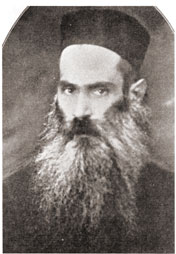
Rabbi Polachek was born in Sinichinitz, near Meitschet, Grodna. He was brought to Volozhin before he reached the age of 12. Referred to as the Meitscheter Illui by Rabbi Chaim Soloveitchik zt"l, his bar mitzvah lecture, which he delivered in the yeshiva, made a memorable impression. He remained at the yeshiva in Volozhin until it closed in the winter of 1892 then went to learn in Brisk with his mentor, Rabbi Chaim Brisker zt"l.
Rabbi Polachek remained in Brisk for four years and then transferred to Yeshivat Knesset YisroeI in Slobodka. Rabbi Chaim Soloveitchik said that in all his life he had never come upon a genius of the measure of the Meitscheter. Afterwards, he joined a group of specially selected students in Vilna headed by Rabbi Chaim Ozer zt"l.
In 1905, when the Yeshiva of Lida was founded by Rabbi Yitzchok Yaakov Reines zt”l, Rabbi Polachek was asked to be a rosh yeshiva, and he taught Torah there until the outset of World War I. In 1921, he was accepted as the rosh yeshiva of Tachkemoni in Bialystok.
After a year he received Rabbi Dov Revel's invitation to become a rosh yeshiva at Rabbi Isaac Elchanan Theological Seminary, arriving in America in 1922. He taught at the Yeshiva for six years and was greatly revered there. He was also active in the Agudath HaRabbonim of America and in Ezras Torah.
In 1928 he passed away suddenly. Rabbi Meir Berlin zt”l said that as great as he was in Torah, Rabbi Polachek stood out seven measures more in the greatness of his character.
-
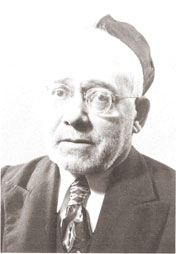
Rabbi Poleyeff was born in Timkovitz, near Slutsk in Minsk. He studied in the yeshiva in Slutsk, where he was one of the foremost student of Rabbi Isser Zalman Meltzer zt”l and was one of the editors of Yagdil Torah. He received semikhah from Rabbi Meltzer in 1910.
In 1920, he arrived in America and was immediately appointed a rosh yeshiva at Rabbi Isaac Elchanan Theological Seminary.
Rabbi Poleyeff taught thousands of students in his 46 years at Yeshiva. A gaon in Torah and an innovative thinker, he was known particularly for his warmth and love of his students. His well-received seforim, Orach Mesharim were posthumously reprinted in 1970 as a three-volume set.
-
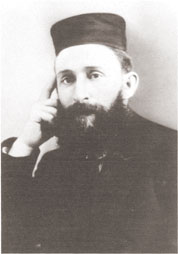
Born in Birzh, Kovno, Rabbi Preil studied in Shadova, Telshe, and Slobodka, where he particularly excelled. In 1907, he was sent by the yeshiva in Telshe to London, and then became rabbi of Manchester. In 1911, he came to America and was appointed rabbi in Trenton, New Jersey.
In 1912, he was chosen to be a rosh yeshiva at Rabbi Isaac Elchanan Theological Seminary, and taught there until 1922. He was appointed rabbi of Elizabeth, New Jersey, in 1919 where he served until his death. This gaon, who was known for his righteousness, was very active in the Agudath HaRabbonim of America. He was also instrumental in the establishment of Ezras Torah and other charitable institutions.
In addition to contributing many writings to various Torah journals, Rabbi Preil authored Sefer HaMaor, a two-volume work on halakhah and aggadah.
-
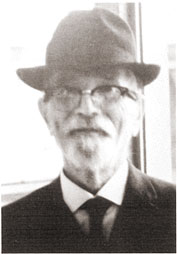
Rabbi David Rackman was born in Halosk. He received his rabbinical training from his father and, afterwards, from Rabbi Boruch Dov Leibowitz zt”l, when his yeshiva was in Halosk. From there he traveled to Slobodka to learn with Rabbi Isser Zalman Meltzer zt”l. He received semikhah from Rabbi Meltzer as well as from the Ridbaz zt”l.
In 1905, he arrived in America and, in 1907, was appointed a rosh yeshiva at Rabbi Isaac Elchanan Theological Seminar. He taught there for two years and then settled in Albany, New York, where he entered the business world.
Rabbi Rackman did not wish to use the rabbinate as the means of his support. He was very successful in his business but he remained no less diligent in his Torah study and wrote chiddushei Torah which he published in various Torah journals.
-
Harav Reb Sholom Rackovsky was born in Minsk, Russia. At the renowned Yeshiva of Volozhin, he was a younger contemporary of Harav Avraham Yitzchak Kook, who subsequently gave him semicha, and was highly successful in his torah studies, becoming known as “der Minsker Iluy”- the prodigy from Minsk. He became strongly interested in the Haskalah movement and in Zionist causes. At the age of 19 he decided to travel to Palestine, in order to participate in the rebuilding of the Jewish homeland. In keeping with his desire to help build the yishuv (Jewish settlement), Reb Sholom joined the pioneers developing the agricultural settlement of Petach Tikvah. However, the environment was not conducive to religious observance and Torah study. Therefore, at the suggestion of the Brisker Rov, he moved to Jerusalem, eventually becoming a rosh yeshiva at Yeshivas Toras Chaim.
The outbreak of World War I found him in America, unable to return to Jerusalem. He then became a Rosh Yeshiva at Yeshivas Rabbeinu Yitzchak Elchanan, where he remained to the end of his life. Reb Sholom was renowned for two qualities- encylopedic torah knowledge and a kind and sincere concern for the progress and well-being of his talmidim. He was frequently consulted as a last authority following enthusiastic discussions in the beis medrash, and his rare public divrei torah were considered to be occasions not to be missed, and sources of material to be treasured.
Reb Sholom’s legacy at Yeshiva University continues to this day: three of his sons were students at RIETS; three of his grandsons, four great-grandsons and five great-great-grandchildren attended Yeshiva College or Stern College for Women. Seven became RIETS musmakhim, and one is a student at Albert Einstein College of Medicine. Many of his descendants in Israel have also held leading positions as rabbis, dayanim and teachers. -
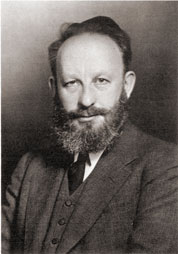
Born in Pren, Kovno, Rabbi Revel studied at the yeshiva of Telshe under Rabbi Eliezer Gordon zt”l and Rabbi Shimon Shkop zt”l. Afterwards he traveled to America and studied linguistics and the sciences. At age 20, he earned a Ph.D., the first awarded by Dropsie College in Philadelphia.
He was recognized as an extraordinary genius, as well as an innovative thinker. He wrote chiddushei Torah and published some of them in the journal Yagdil Torah, edited by Rabbi Tomashav zt”l from 1916-1920.
In 1915 he was appointed president of Rabbi Isaac Elchanan Theological Seminary, which had just combined with the Etz Chaim Yeshiva. He put his efforts into expanding the Yeshiva and attracting the gaonim of the generation as its roshei yeshiva. In 1922, he brought the Meitscheter Illui, Rabbi Shlomo Polachek zt”l, to the Yeshiva. After Rabbi Polachek passed away in 1928, Rabbi Revel brought Rabbi Moshe Soloveitchik zt”l to succeed him. He was also successful in bringing Rabbi Shimon Shkop zt”l to give shiurim at the Yeshiva for a year. Rabbi Revel also gave regular shiurim there.
In addition, he was among the leaders of the Agudath Harabbonim of America, and one of the founders of Ezras Torah. He was active in Mizrachi and helped in the arrangement of the encyclopedia Otzer Yisroel.
-
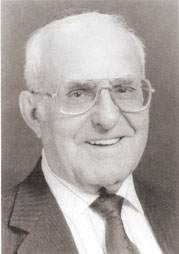
Born in Vysock, Rabbi Romm--orphaned of his father while yet an infant--nonetheless became known as an illui while still a young boy. From Vysock he traveled to Slonim to learn under Rabbis Shabsai Yogel and Fain zt 'l. There he met another illui, a young boy named Samuel Belkin who was also bereft of his father, and, for a time, they literally shared a bed and a pair of shoes.
After Slonim, Rabbi Romm studied under Rabbi Horowitz zt”l, founder of the Navardok Mussar movement, and then under Rabbi Aharon Kotler zt'l in Kletzk. Subsequently he attended the yeshiva in Mir where he received semikhah from Rabbi Kamai zt”l and where he established a close friendship with the famed mashgiach, Rabbi Yeruchem Lebowitz zt”l.
His reputation at Mir led to a shidduch with Kala Eisenbod, the daughter of the Rabbi of Vasilishik. Rabbi Romm traveled with the Mir Yeshiva during its remarkable journey to Shanghai, but left the yeshiva and went to Israel in 1942. He lived there until 1948, when he was invited to teach at Yeshiva University.
Rabbi Romm gave shiurim at the highest level there until his passing. During this time healso served as the rabbi of Congregation Noda B'Yehuda in Washington Heights, NY, and was a leading Torah adornment of Mizrachi
Renowned for his sweeping knowledge of Torah and no less recognized for his great ethical character, Rabbi Romm represented to his students the ideal of rebbe. To others he was known as an orator par excellence and gomel chesed. Acquaintance, talmid, and friend of many of the century's leading talmidei chachamim, he incorporated within him the wisdom and ideology of each of the gdolei Yisrael with whom he learned into a comprehensive whole.
-
Rabbi Rosenberg was born in Lomza. While still in his youth, he earned a great reputation because of his phenomenal memory and sharpness of mind. At age 10, he was a student of Rabbi Shlomo Nosson Kotler zt”l. At 18, he became a student of Rabbi Dov Ber Lifshitz zt”l, Av Beit Din of Srednik, and had already achieved a comprehensive knowledge of the Talmud. When he was 24, he received semikhah from several gaonim, including the author of the Aruch HaShulchan.
After the pogroms in Russia, he came to America in 1903 and served as rabbi in Poughkeepsie, New York; Bayonne, New Jersey; and Burlington, Vermont. In 1911, he was appointed rabbi in Paterson, New Jersey, and remained there until 1919 when he moved to Jersey City.
He was a gaon in Torah and also an individual of rare courage who did much for Torah and Judaism. Rabbi Rosenberg was among the builders of the Agudath HaRabbonim of America and Canada and was the spirit of the organization for decades. In addition, he led the Central Relief Committee and is noted as the founder of Ezras Torah. Many of his writings appeared in the leading Torah journals.
When he lived in Bayonne, he regularly came to Rabbi Isaac Elchanan Theological Seminary to test the students. In 1921, when Dr. Bernard Revel zt”l temporarily left the Yeshiva, he filled the position in his stead, serving as president for a full year until Rabbi Revel returned. Afterward, he continued for a time as vice president and worked energetically for the Yeshiva. He also served on its semikhah board.
-
Born in the town of Shatz, Romania in 1913, Rabbi Schachter learned in the Viznitz Yeshiva. He came to America at the age of 15. He then learned in RIETS under Rav Moshe Soloveitchik where he earned his bachelor's degree from Yeshiva College as well as semichah. He later received a Ph.D. from Dropsie College in Philadelphia. His doctoral dissertation on the variant readings between the Bavli and the Yerushalmi was later published by Mossad Harav Kook. Rabbi Schachter served in the rabbinate first in Pennsylvania and several other communities, before finally serving as the rabbi of a prominent shul in the Bronx. Reflecting his expertise in Halacha, Rabbi Schachter served as the coordinator of the RCA Beth Din for Gittin and Chalitzot. Rabbi Schachter joined YU's faculty in 1951, and over the years taught in the Semikah Program, as well as Stern College for Women and the graduate school of social work. His son Rabbi Hershel Schachter has been a prominent member of the RIETS faculty since 1967. Rabbi Melech Schachter continued to teach at RIETS through 2005 and passed away in Adar 2007.
-
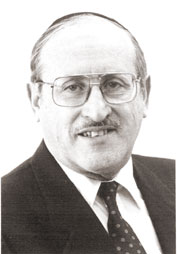
Rabbi Schussheim, son of Rabbi Moshe Schussheim zt”l, was born in Brooklyn, New York. Although he passed away at a young age, he was able to amass thousands of students over the 40 years he served as a rosh yeshiva at Rabbi Isaac Elchanan Theological Seminary.
Rav Schussheim was among the first American-born students to receive semikhah from RIETS, and ultimately become a rosh yeshiva at the Yeshiva. At 20 he was appointed as a ram in the Yeshiva University High School, and at age 42 was a rosh yeshiva in the Yeshiva itself. In his latter years he helped introduce and direct the RIETS Halakhah L”Maaseh program for students about to receive semikhah.
He was a student of Rabbi Yosef Dov HaLevi Soloveitchik zt”l, whose shiurim he attended for 30 years. Even after he began giving shiurim himself he did not leave his great rebbe. Rabbi Schussheim was humble, at once both simple and profound, and all of his aspirations were directed at attaining the truth. He desired neither honor nor greatness. He loved all and glorified the name of G-d in all of his ways and actions
-
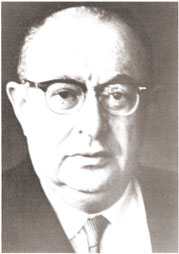
Rabbi Shatzkes was born in Evia, Vilna. His father was Rabbi Moshe Shatzkes zt”l. The younger Rabbi Shatkes studied at the yeshiva in Grodna with Rabbi Shimon Shkop zt”l, and then at the yeshiva in Mir. He received semikhah from Rabbi Tavil Meltzer zt”l, Rabbi Chanoch Henoch Agus zt”l of Vilna, author of the Marcheshet, and Rabbi Eliezer Yehuda Finkel zt”l, rosh yeshiva of Mir. In 1941, he came to America and was accepted as rabbi of Kehillat Chochmat Adam-Anshei Lomza in New York. In 1944, Rabbi Shatzkes was appointed a rosh yeshiva at Rabbi Isaac Elchanan Theological Seminary, where he taught for 40 years. His writings were published in various Torah journals. He left a sefer entitled Tifferet Aharon, which is still in manuscript form.
-
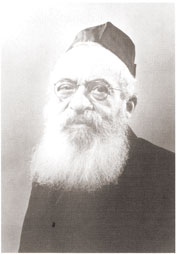
Rabbi Shatkes was born in Vilna. His father, Rabbi Avrohom Aharon Shatzkes zt”l, was known as the Illui from Mizetal. The younger Rabbi Shatkes studied under the guidance of his stepfather, Rabbi Yitzchok Blazer zt”l (known as Rav Itzele Peterburger). He studied at the yeshivotin Slobodka and Telshe and went on to receive semikhah from Rabbi Raphael Shapira zt”l of Volozhin, Rabbi Eliezer Gordon zt”l of Telshe, and Rabbi Elazar Rabinowitz zt”l of Minsk.
He served as rabbi of Lipnashek and Ivia, both in the Vilna district. In 1931, Rabbi Shatzkes was chosen to become rav and Av Beit Din of Lomza. Forced to flee when the Russians captured Lomza in 1940, he came to Vilna where he was appointed rosh yeshiva of the yeshiva in Grodna, succeeding Rabbi Shimon Shkop zt”l.
In 1941, he reached America by way of Japan, and was appointed a rosh yeshiva at Rabbi Isaac Elchanan Theological Seminary, where he taught hundreds of students until his death. In 1910, he published a pamphlet entitled Anaf Pri, containing his chiddushim on the Pri Yitzchok of Rabbi Yitzchok Blazer.
-
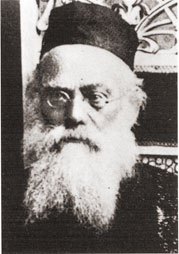
Rabbi Shkop was born in Toretz, Minsk. At age 12, he studied in the yeshiva in Mir for two years. He then traveled to Volozhin and studied with the Netziv zt”l. He was part of an extraordinary group of students with whom Rabbi Chaim Soloveitchik zt”l interacted.
In 1884, he became a ram at the yeshiva in Telshe, where he taught Torah for 18 years and became well-known for hi s style and distinctive chiddushim. In 1903, he was appointed rabbi of Meltch, replacing the gaon Rabbi Zalman Sander zt”l (who became rabbi in Krinki). In 1907, he became the rabbi of Breinsk, where he founded a yeshiva known as Yeshivat Rav Shimon Breinsker.
During World War I he remained in Breinsk, which was captured by the Germans, and helped assiduously to look after his townspeople. Since his yeshiva was forced to close during the war, he used his spare time to arrange his chiddushim and shiurim in a sefer. This is the popular Sharei Yosher, which was published in 1928.
In 1920, Rabbi Shkop was urged by the leading rabbis of the time, led by Rabbi Chaim Ozer zt”l of Vilna, to accept the position of rosh yeshiva of Yeshivat Sharei Torah in Grodna. Rabbi Shkop was successful in turning the yeshiva into one of the largest and most popular in Europe.
In 1928, he traveled to America in order to alleviate the difficult financial situation of his yeshiva and was received there with the highest honor. After the passing of the Meitscheter Illui, Rabbi Shlomo Polachek zt"l, he became a rosh yeshiva at Rabbi Isaac Elchanan Theological Seminary, where he taught for one year.
Although he wanted to remain, the leading rabbis of Europe, led by the Chofetz Chaim zt”l and Rabbi Chaim Ozer zt”l, felt it imperative for him to return to Grodna and to his yeshiva there. Rabbi Shkop answered their call, albeit with some misgivings. When World War II broke out, he moved with his yeshiva to Vilna, where he died shortly thereafter.
-
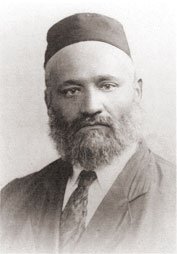
Rabbi Shunfenthal was sent by his father, a poor tailor, to study at the yeshiva in Slonim where he became known as an illui. After receiving semikhah, he was appointed ram in the yeshiva of Baronowitz where he remained for many years. He came to America in 1927 and was almost immediately appointed a rosh yeshiva at Rabbi Isaac Elchanan Theological Seminary.
He taught hundreds of students who were influenced by his honesty, righteousness and simplicity. His love for his students was evidenced by his willingness to continue teaching in the Yeshiva during the summer months without remuneration. He was an extraordinary darshan and lectured in many synagogues throughout the city. He remained at the Yeshiva for 28 years until his death.
-
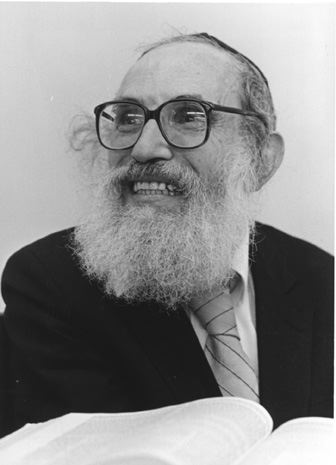
Rabbi Ahron Soloveichik was the son of Rabbi Moshe Soloveitchik zt”l, grandson of Rabbi Chaim HaLevi zt”l, and brother of Rabbi Yosef Dov Soloveitchik, zt”l. Rabbi Soloveichik was born in 1917 in Khislavichi, Russia, where Rav Moshe served as rabbi, moved to Poland with his family in 1920 and immigrated to the United States in 1930.
Rabbi Soloveichik was a graduate of Yeshiva College, a musmakh of RIETS, and held a law degree as well. Rabbi Soloveichik was a talmid of both his father, Rabbi Moshe, and later his brother, Rabbi Yosef Dov. Before joining the RIETS faculty, Rabbi Soloveichik taught at Mesivtah Tifereth Jerusalem and Yeshiva Rabbi Chaim Berlin. Upon moving to Chicago, he taught at the Hebrew Theological College and then founded the Brisk Yeshiva, where he served as dean until his death. Rabbi Soloveichik continued to teach at RIETS as well, traveling weekly from Chicago to New York after his brother R’ Yosef Dov became ill. He also served as a pulpit rabbi in New York and Chicago.
For many years, Rabbi Soloveichik delivered a popular Parshat HaShavua Hashkafa shiur at RIETS. Well known for his strong, unwavering opinions on many issues, Rabbi Soloveichik often spoke about issues confronting the community, including his strong views on the Vietnam War. His clear, unyielding views in halakha, as well, led to the establishment of North America’s first yashan-only bakery, in Chicago. Rabbi Soloveichik’s tenacity was also evident in his continuing to commute, weekly, from his home and yeshiva in Chicago to RIETS in New York, even after a debilitating stroke made it difficult for him to walk.
Rabbi Soloveichik had many talmidim in Yeshiva and throughout the world, and he wrote sefarim both in Hebrew and English.
-
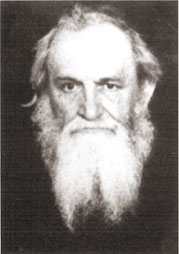
Rabbi Soloveitchik was born in Volozhin. He studied there with his father, Rabbi Chaim Halevi zt”l, until the yeshiva closed in 1892. He then moved to Brisk where his profundity and sharpness of mind became well known.
At age 23, he married the daughter of Rabbi Eliyahu Feinstein zt”l, renowned rabbi of Pruzhan. He lived with his father-in-law in Pruzhan for several years . At age 31, he became rabbi of Rasin (Kovno district), replacing Rabbi Alexander Moshe Lapidus zt”l. He established a yeshiva there and, in 1913, was appointed rabbi in Choslovitz, Smolensk, where he served for eight years.
In 1918, his father, Reb Chaim, passed away in Brisk. However, the war that was still raging did not allow him to respond positively to the requests ofthe community leaders that he take his father's place. Instead, his younger brother, Rabbi Yitzchok Zev zt”l, succeeded Rav Chaim. When Rav Moshe later arrived in Brisk in 1921, he did not wish to force his brother out of the position he had already assumed and, instead, accepted the offer of Mizrachi in Warsaw to become rosh yeshiva of Beit Midrash L'Rabbonim (the Tachkemoni Yeshiva). He taught there from 1922-29.
In 1929, Rabbi Soloveitchik was summoned by Rabbi Bernard Revel and the leaders of Rabbi Isaac Elchanan Theological Seminary to come to America and become a rosh yeshiva in their Yeshiva. He accepted the position and gave shiurim there for 12 years, teaching hundreds of students. When he passed away, his son and student, Rabbi Yosef Dov Halevi Soloveitchik zt”l, succeeded him as rosh yeshiva.
His writings were published in the sefer Kovetz Chiddushei Torah, a compilation of his writings in various Torah journals.
-
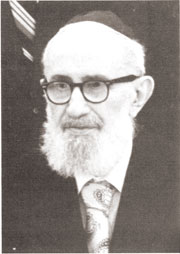
Rabbi Soloveitchik was born in Pruzhan, Poland, the son of Rabbi Moshe Soloveitchik zt”l, and grandson of Rabbi Chaim HaLevi zt”l. At the time, Rabbi Moshe was living with his father-in-law, Rabbi Eliyahu Feinstein zt”l, rabbi of Pruzhan and author of Teshuvot Halichot Eliyahu.
Rabbi Yosef Dov studied with his father, whom he considered to be his foremost teacher, until the age of 23. In the final year of Rabbi Chaim’s life, he moved to Warsaw where his son, Rabbi Moshe, was living at the time. During that year, Rabbi Yosef Dov studied together with his vaunted grandfather. Several years later he began university studies in Berlin while continuing his immersion in Torah.
In Berlin, he met Rabbi Chaim Heller zt”l, with whom he developed a close and lasting relationship. He also encountered Rabbi Menachem Mendel Schneerson zt”l, who was later appointed the rebbe of Chabad. During this period, Rabbi Yosef Dov made frequent visits to the city of Vilna where he became a favorite of Rabbi Chaim Ozer Grodzinski and other leading Lithuanian gaonim.
In 1932, he moved to America and settled in Boston. He founded Yeshivat Rambam—the Maimonides School—and delivered weekly shiurim there for many years. In 1941, he succeeded his father, upon the latter's passing, as rosh yeshiva at the Rabbi Isaac Elchanan Theological Seminary, commuting from Boston to New York each week.
His shiurim in halakhah and aggadah, which reached to the ends of the Jewish world, made a profound impact on Torah learning in our times. They continued for decades until he was compelled to stop due to an illness that overtook him several years before his demise.
In addition to the shiurim that he delivered at the yeshiva and in Boston, he delivered a shiur every Tuesday evening at the Moriah Synagogue in Manhattan to overflow audiences.
Rabbi Yosef Dov served as the Honorary President of the Agudath HaRabbonim of America, and became the rebbe and chief mentor of the Rabbinic Council of America (RCA), as well as the chief intellectual and spiritual force of Mizrachi, at whose gatherings he delivered lectures several times every year. After the passing of his wife z”l in 1967, he began giving additional shiurim during the summer months in Boston to his students and to the RCA.
Rabbi Yosef Dov was the most influential figure associated with the spread of Torah in America, and he was singularly known as “the Rav.”
-
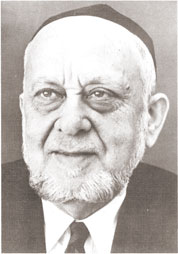
Rabbi Steinberg was born in Ostrolenka, Poland. He studied at yeshivot in Lomza and Slobodka, and was among the outstanding students of Rabbi Dovid Tavil Meltcher zt”l and Rabbi Raphael Volozhiner zt”l. He received semikhah from Rabbi Shimon Shkop zt”l and again, in this country from Rabbi Yosef Rosen zt”l of Passaic, New Jersey.
He arrived in the United States in 1921 and was immediately appointed a rosh yeshiva at Rabbi Isaac Elchanan Theological Seminary. There he taught Torah to hundreds of students until 1970.
He authored two seforim: Degel Machane Ephraim volume one and Degel Machane Ephraim volume two in 1970 (on the first yahrzeit of his wife z”l). The second volume was lost in the mail before it was published. The author rewrote the entire sefer from memory and it was posthumously published.
-
Rabbi Dr. Moshe David Tendler was born on Aug. 7, 1926, on the Lower East Side of Manhattan, one of seven children. His father, Rabbi Isaac Tendler, an immigrant from Lithuania, was the head of the Rabbi Jacob Joseph Yeshiva in the neighborhood and the rabbi of the Kominitzer Synagogue. Moshe attended the yeshiva through elementary school. His mother, Bella (Baumrind) Tendler, was a real estate lawyer.
Rabbi Tendler’s more than 80-year association with Yeshiva University began when he entered its Talmudical Academy, a high school. He later took up rabbinical studies at the university’s Rabbi Isaac Elchanan Theological Seminary. One of his teachers was Rabbi Joseph Soloveitchik with whom he studied for seven years.
Drawn to biology from childhood, Rabbi Tendler, while studying at Yeshiva, simultaneously took evening courses at New York University. There he received a bachelor’s degree in biology and then a master’s degree in the subject before eventually earning the doctorate at Columbia.
Years ago as a student, Rabbi Tendler was studying at a local library when he was approached by Shifra Feinstein, Rabbi Feinstein’s daughter, who asked him a chemistry question. They went on to marry and have eight children, moving to Monsey in 1960. There he was named rabbi of the Community Synagogue.
Yeshiva hired him as a biology instructor in 1952, and within a few years he was appointed assistant dean in charge of student affairs. He was later named Rabbi Isaac and Bella Tendler Professor of Jewish Medical Ethics, and is a Professor of Biology, as well as Rosh Yeshiva in Yeshivat Rav Yitzchak Elchanan (MYP/RIETS). Rabbi Tendler was the leading expert on medical ethics as it pertains to Jewish law. He was is author of Practical Medical Halakhah, a textbook of Jewish responsa to medical issues, and "Pardes Rimonim", a book about the halachot of Taharat Mishpacha and many Torah articles.
He lectured from his hospital bed by Zoom until shortly before his passing.
-
Rabbi Weil was among the outstanding students of the Chofetz Chaim zt”l in the yeshiva of Radin. He was humble and unpretentious, and few details about his life are available.
A great scholar and a tzaddik, Rabbi Weil was known as "the Chofetz Chaim of America." He was the mashgiach of Rabbi Isaac Elchanan Theological Seminary while the Yeshiva was under the leadership of Rabbi Bernard Revel zt”l and for several years after his passing. In that capacity he served as mentor in the Yeshiva's Beit Midrash and administered personal oral examinations to entering students.
His love for his students knew no bounds; he understood them and constantly strengthened their commitments to Torah.
-
Rabbi Yaffe was born in Vabolnik, Vilna. At age fourteen he arrived at the yeshiva in Volozhin to study. At 20 he received semikhah from Rabbi Yitzchok Elchanan zt”l, the Netziv zt”l, as well as many other gaonim. He authored the sefer Pri Eshel on Tractate Yevamot at age 21.
He served as a rabbi in various cities in Lithuania and, in 1890, arrived in America and served as a rabbi in St. Louis. He published the seforim Shoel Ke’inyan and Sicha Sblemah. Afterwards, he settled in New York and became rabbi of Beit Midrash Hagadol where he remained until his final days.
Rabbi Yaffe was among the founders of both the Agudath HaRabbonim of America and Rabbi Isaac Elchanan Theological Seminary. He was among the great rabbanim of that time who monitored the well-being of the Yeshiva.
-
Rabbi Gershon Yankelowitz was born in 1909 in Lubcza, Poland, to Rabbi Dovid and Bunia Yankelowitz, Hy”d, both of whom perished in the Holocaust. He first studied under Harav Elchonon Wasserman, zt”l, before going on to the famed Yeshivah of Radin. There he merited to bask in the light of the Chofetz Chaim, whom he referred to as “der Rebbe” for the rest of his life.
Going on to the Mirrer Yeshivah, Harav Yankelevitz merited a connection to Harav Yeruchem Levovitz, zt”l, whose mussar lessons would have a profound impact on him. With the outbreak of World War II, he fled with the yeshivah to Kobe, Japan, and from there to Shanghai, where he remained until immigrating to the United States in 1947.
He enjoyed deep, meaningful relationships with all sorts of people, great and simple. His genuine ahavas Yisrael defined his being. He greeted everybody warmly and was a true friend to neighbors and fellow congregants at the Young Israel of Pelham Parkway in the Bronx, where he davened for the past 60 years.The most important thing to Harav Yankelewitz was teaching Torah. He passed up several offers of rabbinic pulpits, for fear it would distract him from his talmidim. Rabbi Yankelewitz joined Yeshiva University in 1958 and gave a daily shiur at RIETS for semicha [rabbinic ordination] and college students for more than five decades.
-
Rabbi Yudelowitz was born in Novorodock, Minsk. He came from a long line of great scholars, and his genius became well known while he was still in his youth. At age 11, he went to learn with his uncle in Kobrin and at 17 he went to the yeshiva in Volozhin. After his marriage, he learned with great intensity in Volfe for three years. In 1870, he published his first sefer, Olim Lemivchan, in Vilna.
Rabbi Yudelowitz served as a rabbi in the cities of Salib, Kozniza, Constantine, Torov, and Kapoli. In 1896, when he published his sefer Beis Av on Orach Chaim, his reputation spread widely in the rabbinate. In 1898, he became rabbi in Manchester, England. He remained there six years until he took a pulpit at Congregation Sharei Tefilah, Boston.
He was not there long before he was appointed a rosh yeshiva at Rabbi Isaac Elchanan Theological Seminary, where he remained for a short time. He became a rabbi in Bayonne, New Jersey, where he served for three years and then returned to New York to become spiritual leader of Congregation Adath Yeshurun-Anshei Lovetz. He remained there until his death. During those years, he authored seven volumes of his sefer Teshuvot Beit Avon the four divisions of the Shulchan Aruch. In addition, he wrote a five-volume work called Drash Av, as well as other works of drush.
-
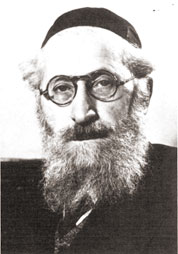
Rabbi Zaks was born in Shidlova near Keirn. He studied in Yeshivat Knesset Beit Yitzchok in Slobodka and then in Radin under the Chofetz Chaim zt”l. During World War I , he studied under the brother-in-law of Rabbi Chaim Ozer zt”l, Rabbi Reuven Dov Dessler zt”l in Hemmil.
After the war, he returned to Radin to study with the Chofetz Chaim, where he gained most of his Torah knowledge. In 1922, the Chofetz Chaim chose him as his son-in-law. Rabbi Zaks had an extraordinary memory, a pure mind, and was an expert in the Talmud and its commentaries. In 1926, he was appointed rosh yeshiva in Radin and the president of the Kollel Kodshim of the yeshiva in Radin where he taught thousands of students until 1940.
During the Holocaust, he escaped with the yeshiva to Vilna. Miraculously, he was saved and he came to America in 1941 where he put all his efforts into rescue work. In 1943, he founded Yeshivat Chofetz Chaim of Radin in New York, and renewed the Kollel Kodshim there. In 1946, he was appointed a rosh yeshiva and bochen at Rabbi Isaac Elchanan Theological Seminary. He passed away in Jerusalem in 1974.
-
Rabbi Zalmanowitz was born in Tomaszow, Poland. In his youth, he studied with the author of Avnei Nezer and Eglai Tal, Rabbi Avraham from Sochaczaw, where he became known as an illui. At 17, he received semikhah from Rabbi Eliyahu Chaim Meisels zt”l, rabbi of Lodz. Besides his greatness in Torah, he was known for his piety and was among the distinguished chassidim of the Rebbe of Gur.
He came to the United States in 1921 and was appointed a rosh yeshiva at Rabbi Isaac Elchanan Theological Seminary in 1927. He taught hundreds of students during his 20 years there. He also served as rabbi at Kehillat Beit Aharon and Beit Haknesset Anshei Emet in Williamsburg, New York.
He was active in the Agudath HaRabbonim, as well as other organizations of Torah and chesed. He was instrumental in the successful efforts to save the Gerrer Rebbe zt”l and part of his family from the hands of the Nazis. Rabbi Zalmanowitz passed away on Erev Yom Kippur.


